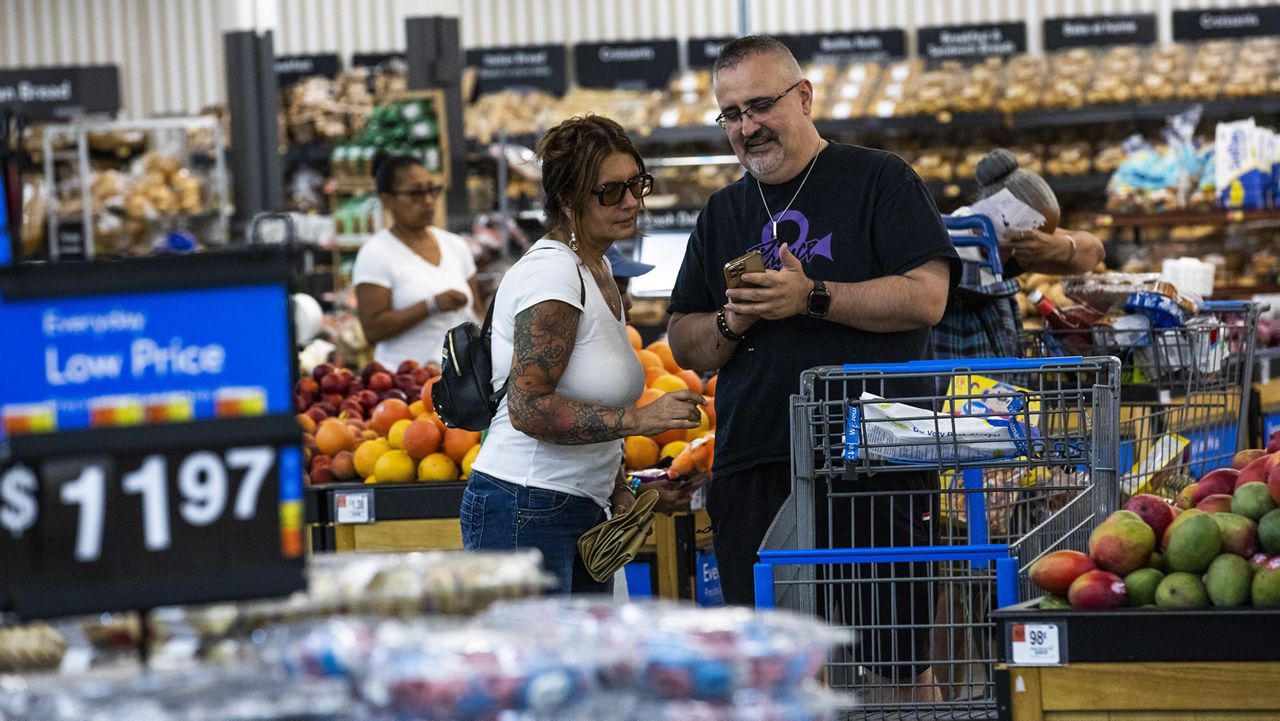The post-pandemic spike in U.S. inflation eased further last month as year-over-year price increases reached a three-year low, clearing the way for the Federal Reserve to cut interest rates next week.
What You Need To Know
- The post-pandemic spike in U.S. inflation eased further last month as year-over-year price increases reached a three-year low, clearing the way for the Federal Reserve to cut interest rates next week
- Consumer prices rose 2.5% in August from a year earlier
- It was the fifth straight annual drop and the smallest such increase since February 2021
- From July to August, prices rose just 0.2%
Wednesday's report from the Labor Department showed that consumer prices rose 2.5% in August from a year earlier. It was the fifth straight annual drop and the smallest such increase since February 2021. From July to August, prices rose just 0.2%.
Excluding volatile food and energy costs, so-called core prices rose 3.2% in August from 12 months earlier, the same as in July. On a month-to-month basis, core prices rose 0.3% last month, a pickup from July's 0.2% increase. Economists closely watch core prices, which typically provide a better read of future inflation trends.
For months, cooling inflation has provided gradual relief to America's consumers, who were stung by the price surges that erupted three years ago, particularly for food, gas, rent and other necessities. Inflation peaked in mid-2022 at 9.1%, the highest rate in four decades.
Fed officials have signaled that they're increasingly confident that inflation is falling back to their 2% target and are now shifting their focus to supporting the job market, which is steadily cooling. As a result, the policymakers are poised to begin cutting their key rate from its 23-year high in hopes of bolstering growth and hiring.
A modest quarter-point cut is widely expected next week. Over time, a series of rate cuts should reduce the cost of borrowing across the economy, including for mortgages, auto loans and credit cards.
The latest inflation figures could inject themselves into the presidential race in its final weeks. Former President Donald Trump has heaped blame on Vice President Kamala Harris for the jump in inflation, which erupted in early 2021 as global supply chains seized up, causing severe shortages of parts and labor. Harris has proposed subsidies for home buyers and builders in an effort to ease housing costs and backs a federal ban on price-gouging for groceries. Trump has said he would boost energy production to try to reduce overall inflation.
A key reason why inflation eased again in August was that gas prices tumbled by about 10 cents a gallon last month, according to the Energy Inflation Administration, to a national average of about $3.29.
Economists also expect the government's measures of grocery prices and rents to rise more slowly. Though food prices are roughly 20% more expensive than before the pandemic, they have barely budged over the past year.
Another potential driver of slower inflation is that the cost of new apartment leases has started to cool as a stream of newly built apartments have been completed.
According to the real estate brokerage Redfin, the median rent for a new lease rose just 0.9% in August from a year earlier, to $1,645 a month. But the government's measure includes all rents, including those for people who have been in their apartments for months or years. It takes time for the slowdown in new rents to show up in the government's data. In July, rental costs rose 5.1% from a year ago, according to the government's consumer price index.
Americans' paychecks are also growing more slowly — an average of about 3.5% annually, still a solid pace — which reduces inflationary pressures. Two years ago, wage growth was topping 5%, a level that can force businesses to sharply raise prices to cover their higher labor costs.
In a high-profile speech last month, Fed Chair Jerome Powell noted that inflation was coming under control and suggested that the job market was unlikely to be a source of inflationary pressure.
Consumers have propelled the economy for the past three years. But they are increasingly turning to debt to maintain their spending and credit card, and auto delinquencies are rising, raising concerns that they may have to rein in their spending soon. Reduced consumer spending could lead more employers to freeze their hiring or even cut jobs.



